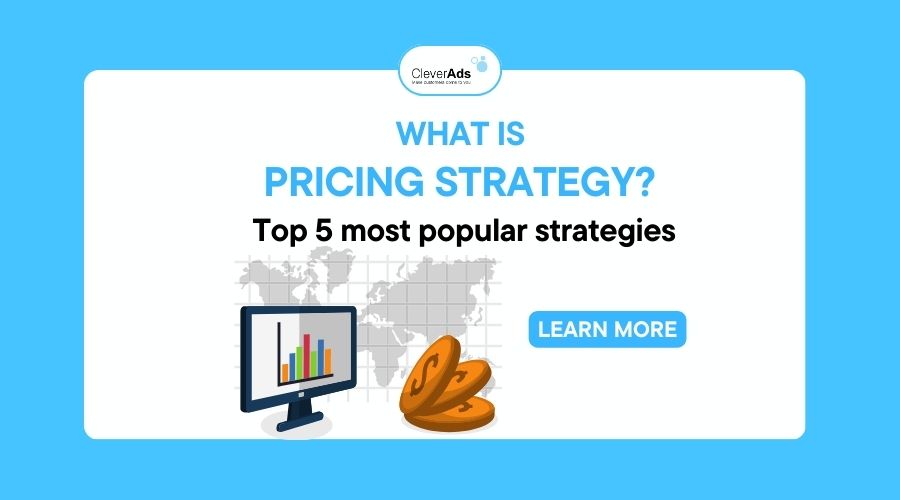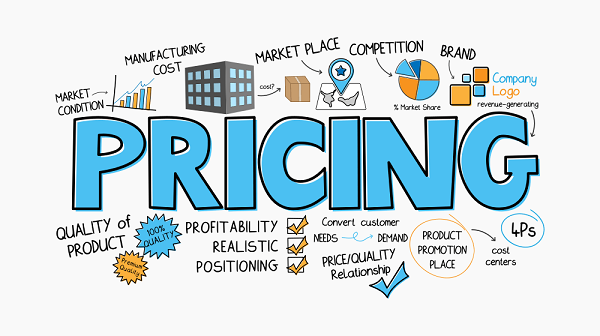What is pricing strategy? Top 5 most popular strategies

In the 4Ps of marketing (Product, Distribution Channel, Sales Promotion, Price), price is the only factor that brings revenue to the business. Therefore, building a good pricing strategy is the principal to increase revenue, profit and brand positioning in the market. Let’s learn important information about pricing strategy with CleverAds below.
1. What is a pricing strategy?
Pricing strategy is a strategy businesses apply to product prices to help increase sales and ensure profits. At the same time, the price also helps to position the brand in the hearts of consumers. The pricing strategy aims to identify attractive and well-competitive prices in the market.
This is a crucial strategy that businesses need to be extremely careful about.

2. The role of pricing strategy
Customer needs need to include two elements: desire and ability to pay. Therefore, the price will be a way to determine who the desired customer group is.
A good pricing strategy will help businesses increase revenue by targeting the right customer file, increasing customer satisfaction because this is the price they want.
The lowest price will only sometimes make the consumer the most satisfied. Therefore, having a reasonable pricing strategy according to each product life cycle or brand positioning at the right time is extremely important.
3. Common mistakes when making pricing strategy
Businesses often make the following mistakes when making pricing strategies, leading to loss of revenue:
- Competing on price: This is a classic strategy, but it will do more harm than good in the long run because it bites directly into the revenue pie. In addition, customers will quickly leave you if there is a cheaper product.
- No clear pricing strategy: this is frustrating for customers because the price is unstable, making them unable to determine the correct product value.
- Paying too much attention to competitors’ prices: Over-dependence on competitors’ prices to price products will prevent the development from losing its positioning.
4. Steps to the right pricing strategy
- Step 1: Analyze the production costs of the business: operating costs, product production, salary costs for employees, and marketing activities.
- Step 2: Properly assess the market potential: a good analysis of the market potential will help forecast the volume of products that will be consumed. From there, properly assess the impact on costs and product prices.
- Step 3: Determine the ideal and suitable price range: Businesses begin to build the most reasonable price and price strategy from the information available.

5. Popular Pricing Strategies
5.1. Skimming strategy
If your product has a dominant position in the market that competitors cannot imitate, this is the perfect strategy to maximize profits.
Skimming is a phased pricing strategy; set the highest price possible as soon as the product is launched. This is a way for businesses to maximize profits from multiple customer groups.
This strategy is often applied to businesses with a short life cycle in the technology or product sector.
However, this strategy quickly annoys consumers because they feel they have been bought expensively.
5.2. Market penetration pricing strategy
If the product is not much different from the competition and has just hit the market, the penetration pricing strategy will be the optimal choice.
This is a strategy where you price lower than your competitors to attract users in the first place. Initially, the business will likely incur a loss. However, companies can recoup this initial cost when the product has stable users.
The industry groups that often apply this strategy are FMCG products. Consumer demand is always there and does not change.
5.3. Fluctuating Pricing Strategy
This is a strategy that has exploded in popularity in recent years. The price is not fixed but is calculated by an algorithm to personalize to each customer at different times. For example, the price of a motorbike taxi, if you are a person who is less sensitive to prices, booking peak hours, the price will usually be very high. And if you set off-peak hours or are price-sensitive, the price will be low and often come with many promotions to promote buying behaviour.
5.4. Cost-based pricing strategy
This is the simplest strategy; businesses only need to calculate the cost plus the desired profit to set the product price. However, this strategy also has many potential risks due to the need for more research on customers and the customer’s willingness to pay.
To calculate a reasonable revenue, you should consider your competitors’ prices, required margins, and customer pay levels.
5.5. Competitor-based pricing
If you are a small business in the market, and the product has competitors, then competitive pricing is also a suitable way. You will only spend a little money researching prices and still get a reasonable price.
However, the disadvantage of this method is that the pricing strategy may not suit the business and has to rely on the outside too much.
6. Conclusion
Building a good pricing strategy is always a difficult problem for businesses. CleverAds hopes that through this article, you will understand more about today’s typical pricing strategies.
Proud to be TikTok’s Senior Partner in Vietnam, with nearly 15 years of experience. CleverAds confidently asserts that it is always the ideal destination for businesses to send their products, services and brand image in association to spread awareness across a wide range of customers.


